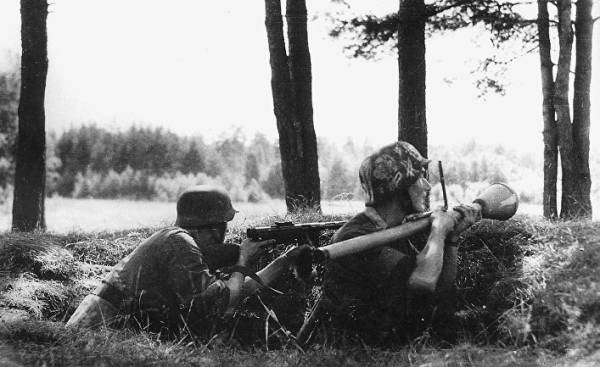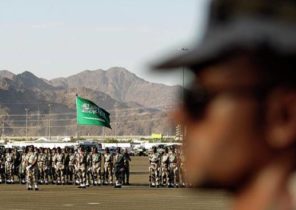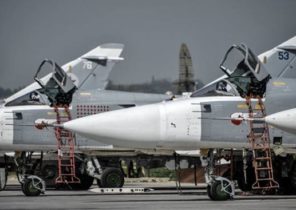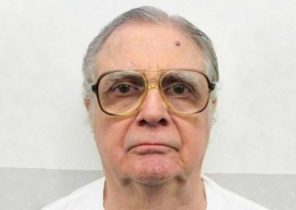
Lieutenant Elise Makinen (Mäkinen Elis) quickly ran down the stairs of the Vyborg castle with the Finnish flag under his arm. Downstairs, he handed the flag to the commander of the 20th brigade, Colonel Arvo Kemppi (Kemppi Arvo).
“The order is executed, sir,” gasped Makinen.
“I’m not a Colonel,” replied Kemppi.
The last soldiers of the brigade left the mined Castle bridge. It blew up, although the Finns remained trapped in the city, which was already filled with the rumble of Soviet tanks. Soon the Olaf tower was raised a red flag.
The darkest time of the Finnish war came early in the evening of 20 June 1944. However, Lieutenant-General Karl Lennart ash (Karl Lennart Oesch) did not consider the game finished. He was sent here to stop the disaster on the Karelian isthmus. Ash was a cold-blooded professional soldier. He fought on the Karelian isthmus in 1918, during the Winter war and the beginning of the continuation War.
Later, ash has diminished the value of delivery of Vyborg. In his opinion, the city had for the red army rather the “advertising value”. For the Finnish troops, it was only an “unfortunate misunderstanding”. Estimates of the ash, the Red army did not expect such a quick victory in Vyborg. This gave the Finns some leeway.
The original plan was to organize the defense on the line Vyborg-Superisory-Taipale, that is on the line WCL. After the loss of Vyborg her starting point was the Vyborg Bay, located to the West of the city. Decisive was that the Soviet air force was unable to prevent the arrival of reinforcements from Eastern Karelia by train. Reinforcement consisted of German troops and tanks.
On the other hand was also a professional. Leonid Govorov as commander of artillery took part in the breakthrough of the Finnish defense lines during the Winter war. For the capture of Vyborg he has just been awarded the title of Marshal. Govorov wanted to demonstrate that he is worthy. He sent his tanks and army towards the Kymijoki river and Saimaa lake.
However, time worked against ambitious plans Govorov. Began the operation “Bagration”. Its center was in Belarus, and the armies of Govorov — especially his aircraft was needed there. Landed in Normandy, the allies wanted the Soviet Union action, which would tie German troops in the East. In this game Finland fought for its existence, was a little pawn.
Route onset Govorov ran through the village of Tali. On the morning of 25 June, 900 artillery guns and 24 heavy mortars began artillery preparation, which lasted an hour and a half. Following this, tanks with a roar swept through the village of Tali in the direction of the bifurcation Porterhouse.
There they were waited by a surprise — Panzer division major General Ruben Lagus (Ruben Lagus). Lagus was called “the Finnish Rommel” (German field-Marshal — approx. TRANS.). Now he showed that a nickname worthy of its owner. Marines handed weapon, which for the Finns was new Panzerfaust and panzerschreck.
The emergence of the Finnish tanks were a complete surprise to the tankers of the red army. They turned and took to flight.
“Tanks and self-propelled chaotically retreated down the road and came under direct fire anti-tank guns of the enemy. The regimental commander in a panic, gave the order of retreat, which worsened the situation even more”, gave his assessment of the place of guard of the red army, Colonel Joseph spiller.
Some of them, however, fought to the end.
“The staff jumped out of the self-propelled units. None of them surrendered, all were killed with weapons in their hands, because it was about an elite force,” recalls major Heikki Mikkola (Mikkola Heikki).
During the day, the Finns destroyed 38 tanks and captured eight.
The blows the red army attacked Finnish and German aircraft. Squadron Lieutenant Colonel Kurt Kuhlmey (Kurt Kuhlmey) changed the balance of power in the air. Incessant air attacks left a terrible residue.
“The fighting was heavy, the terrain was rocky and poorly visible. One pass was a huge rock, and the Finns began to bomb, when we only just begun to explore the area. I didn’t know where to hide, and ran to a large boulder,” says who served in the 134th guards regiment Alexander Kochnev.
One soldier describes a horrible picture.
“There was our regimental engineer, a splinter tore his entire right side of his chest, tore out part of it. Then I noticed that the heart still beats. Human heart beat in plain sight. I completely froze, couldn’t do when he raised his hand. Meaningless eyes looked at me, and then he fell face-first into the ground.”
A good counter-attack has inspired the Finns. The idea of taking in a giant pot of four Soviet divisions. Now, however, was not applicable tactic boilers, which was used during the Winter war. Despite the loss, the Red army still had a strong firepower and reserves were close.
“Counter-attack began promisingly, but the Russians had a lot of the current artillery and powerful tanks that could stop the advance of the Finns. The width of the “throat” of the encirclement was only a kilometer, and the boiler never happened,” wrote ash.
Just in these days he was awarded the Mannerheim Cross. Ash was confused, because the battle is not over yet. Among those killed was his nephew Klaus.
Tali remained in the hands of the red army, but a little North defense was almost prepared. From the point of view of ash, the only way to stop the enemy was the joint action of infantry supported by powerful artillery fire and anti-tank guns. Management of a massive fire helped a new invention — a device for adjusting the shots.
“The biggest threat was on the six-kilometer sector of the front in the area Ihantala,” wrote ash.
It was possible to concentrate the “fire about 13 to 14 light and 10 heavy artillery battalions, a total of 250 guns. It was the largest concentration of artillery during the war.”
Centre of defense was the village Ihantala and hill Piercings. Broad fields gave the Finns a good view of the area. The offensive began in early July.
The constant airstrikes broke the connection in the rear of the red army. One of the most dangerous places in tackles they called “devil’s bridge”.
“Thirty of the cars are in a clear order of battle. First, dropping 500-pound, then 100-pound bombs. Get on the bridge. Infantry running at its ruins, artillery, tank crews and sappers with their weapons rush over the bridge. Stop for a second would mean the same thing to shoot yourself in the forehead,” said petty officer of the red army Inozemtsev.
Counterattacks in Tali gave the soldiers new hope.
“There, in Ihantala, was quite a different mood. It was exciting to see that we have even in the rear are guns in almost every Bush, and that just won’t take us,” recalled gunner, Saarnio (Saarnio).
Saarnio, wondering what was in the yard of the priest in Ihantala quiet squeak small Chicks, although “the world is filled with smoke and a Bang”. In the courtyard he was met by a military pastor in one hand which had a bucket and the other with a hand gun.
“When my guns refused, I borrowed this gun from the priest, ran to his position and continued to fire,” says Saarnio.
Guards major of the red army Vasily Davidenko had a hard time during battles.
“I was injured and I had to make the field of battle, but the Finns were very close! The car could not pass me. The tankers said they’ll get me on the tank. I told them that they first said way to quickly drive through a dangerous place. I took a jar of alcohol, brought me to the tank, and off we went”.
When Davydenko was in the hospital, came the commander of his division, to present him with the order of Suvorov.
“He said that in every regiment remained at 150-200 people. Such heavy losses they suffered”.
From the Finnish side the most significant figure was major-General Einar Vihma (Einar Vihma), commander of the 6th division. He came with his troops from Eastern Karelia to participate in defensive battles. Some fighters his division directly from the wagons and fled to the front line.
Vihma was a controversial figure. He could be cruel. Against him were accused of shooting their own deserters and Russian prisoners of war during the continuation War, but he did not answer them.
Vihma himself preferred to be at the forefront, and sometimes participated in battles with the rifle in his hands. His courage no one doubted, but in its wisdom doubted by many. For Ihantala major-General rode in a car and personally handed out to soldiers of anti-tank weapons. Tired and hungry fighters he could drive up to the field kitchen.
Vihma died as no one could not assume from the grenade’s explosion. It came out in Ihantala to the front line to observe a surgical operation. It was not the responsibility of the division commander, they were more need for war.
After the death Wamy July 5 fights in Ihantala began to subside. Marshal Govorov came to the conclusion that there was no need to Bang your head against the wall Ash. The red army still tried to make a landing in the Bay of Vyborg and attack Vuosalmi to break through the line of VTK. The line buckled, but held.
Govorov had to settle for the occupation of Vyborg: his tanks were already needed elsewhere. In the war diary of the 30th guards army corps analyzed the causes of failures.
“The cost of heavy losses, the Finns have managed to create clearly superior in its forces the group to fight against the loss of by this time the striking power of the army corps and prevent its rapid progress,” was presented in the magazine.
In the fighting at Tali-Ihantala 50 thousand Finns with the support of German troops stopped the advance of 150 thousand Soviet soldiers. The Finns lost a thousand people were killed, approximately a thousand missing and more than six thousand were wounded. The total loss amounted to about eight thousand people. The loss of the Soviet Union amounted to 25 thousand people.
The war between Finland and the Soviet Union lasted until mid-autumn. The latest heavy fighting before the truce was in Ilomantsi. After the darkest moments of the war the battle of Tali-Ihantala returned Finnish troops confidence.
The battle of Tali-Ihantala
1. The battle between Finland and the Soviet Union in the area of Tali-Ihantala took place from 25 June to 9 July 1944 during the continuation War.
2. The battle was the largest in the history of the Nordic countries. It was attended by about 50 thousand Finnish and 150 thousand Soviet soldiers.
3. During this battle Finland stopped the Soviet offensive. Killed 1.1 thousand Finns. The red army suffered a fourfold loss.







